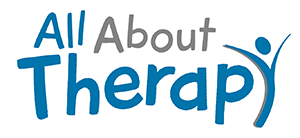Attention can be defined as the ability to focus on a task, both with and without distractions. Children often have very short attention spans, jumping from one activity to the next. The ability to focus and complete a task is important for children, as they are learning many new skills. If a child is hyperactive or impulsive, this has a direct affect on their attention. Having a good attention span allows a child to learn new tasks more quickly. A good rule of thumb for attention span for children is 2-5 minutes per year of life. If a child is 4, he or she should be able to attend to a task or activity for about 8-20 minutes.
When a child is struggling with attention, it can be seen through the symptoms below:
- misplacing or forgetting items, especially items needed for an activity
- makes careless mistakes
- easily distracted by irrelevant sights and sounds
- rarely follows instructions correctly or completely
- jumps from one uncompleted activity to the next
- Appears not to listen when spoken to
- Has difficulty remembering things
- Has trouble staying organized and planning ahead
Signs of hyperactivity and impulsivity are:
- blurts out answers
- has difficulty waiting for their turn
- acts without thinking
- guessing, rather than taking time to solve a problem
- being overly fidgety and squirmy
- often interrupts others
- blurts out answers in class without waiting to be called on or hearing the whole question
- difficulty playing quietly or relaxing
- frequently moves around, often running or climbing inappropriately
- talks excessively
- has a quick temper or short fuse
- unable to sit still or be calm for an activity
- unable to keep powerful emotions in check, resulting in angry outbursts or temper tantrums.
OT is able to assist in many situations, especially when a child is struggling with attention, hyperactivity and/or impulsivity. Treatment can make a dramatic difference in your child’s symptoms.
For more information on how OT may be able to help your child, please feel free to reach out to us by calling (919) 448-6018, contact us through our web form or start a chat with us in the bottom right of the website.
We have a free report, “10 Ways To Help Your Child Pay Attention”, that you can download here.
Attention Case Study
Our pediatric occupational therapists travel to your child to provide services in their natural environment or perform services over telethearpy. In this case study, read one example of how we were able to help a child with attention related challenges.
Courtney (an All About Therapy OT) began working with Tyler when he was 27 months old.
Tyler had been diagnosed with Pontocerebellar Hypoplasia (PCH), which results in atrophy, or shrinking, of parts of the brain. Tyler presented with hearing loss and delayed development across all areas.
Mom’s goals were to address communication difficulties and work on improving developmental skills. She also wanted Tyler to improve his attention span. He attended for about 2 minutes at a time on preferred activities.
Some strategies Courtney used to increase Tyler’s attention span included:
- Offering him breaks in between activities
- Breaking his tasks into smaller tasks that could be easily completed rather than a big task that can be overwhelming
- Engaged him in activities she knew he would enjoy
Children do best when given many small tasks, instead of one big task. Courtney worked with Tyler using various toys that had a defined end, such as a puzzle with 8 pieces. This allowed Tyler to identify how much of the task was left before he would receive a break.
As Tyler’s attention span grew, Courtney provided him with tasks that would take a longer amount of time. To Tyler, he was still only completing one task, which is what he was accustomed to, however, because the task took more time, he was improving his attention span.
Children often lose track of time when playing with a preferred toy. Tyler’s preferred toy was his tractor. He would push it around on the floor and he engaged with Courtney by pushing it back and forth with her.
At the beginning of his treatment, Tyler engaged in reciprocal, or back and forth, play for 3-5 turns. Towards the end of his treatment, he was engaging in back and forth play for upwards of 20 minutes, usually with no breaks.
Another activity that Tyler greatly improved on was a 10 piece shape sorter. At the beginning of his treatment he could only do one shape independently, requiring moderate assistance for 5 others, and abandoning after 6 total shapes. At the end of his treatment, he was completing all 10 pieces with minimal assistance, requiring no cues for attention. He made huge strides towards increasing his attention span during his OT sessions.
Courtney worked with Tyler for 8 months before he turned 3 and started attending preschool. He would continue to receive OT services at school. Mom was happy with the progress he had made and provided this feedback:
“I highly recommend Courtney for OT! In the 8 months she worked with my son, he made amazing progress on his fine motor skills. I also noticed a huge improvement in his ability to focus on tasks, his determination to complete a task, and even increased communication (sign language). We will miss working with her!”
~Megan B.
Would improved attention and less hyperactivity be helpful for your child? Click here for: 10 Steps to Help Your Child Pay Attention
Get more tips, interact with our OT’s and connect with other parents by joining our Facebook Group Here.

